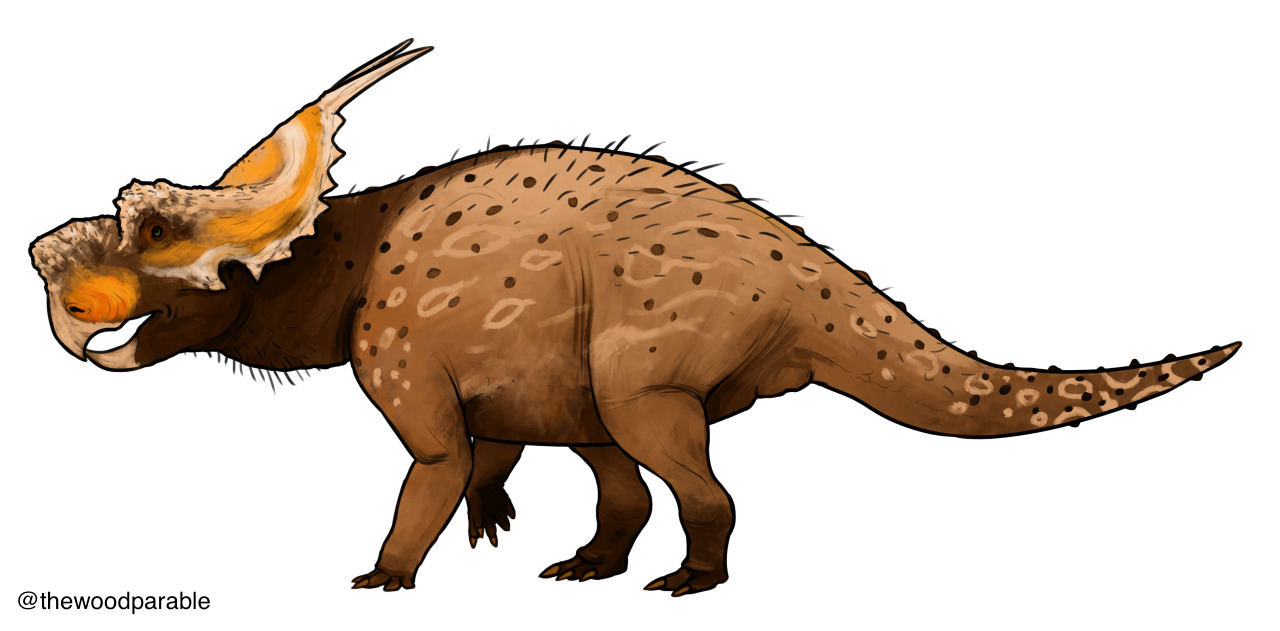Welcome to Achelousaurus

Name Definition
Achelous lizard
Name Given By
Sampson in 1994
Location
Two Medicine Formation in northwestern Montana, U.S.
Classification
Dinosauria, Ornithischia, Marginocephalia, Ceratopsia, Ceratopsidae, Centrosaurinae, Pachyrhinosaurini, Pachyrostra
Size
about 1.5 - 2 meters tall, 4 - 6 meters long, estimated to be about 3 tons
Temporal Range
Campanian stage of the late Cretaceous, approximately 74.5 million years ago
Ecological niche
herbivore with horns as defense
Species/Sub Species
A. horneri
Diet
Due to its height, Achelousaurus and other smaller herbivores were restricted to eat plants no taller than about 1 meter tall
Introduction
Achelousaurus is a genus of centrosaurine ceratopsids that lived in Montana and lived during the Late Cretaceous. Achelousaurus has been speculated to be a transitory form between Einiosaurus and Pachyrhinosaurus. Similar to Einiosaurus, Achelousaurus has two spikes protruding from the top of its frill, but it has the same large “boss” or growth on its snout like Pachyrhinosaurus. This is why Achelousaurus is considered a transitory form and also shows scientists how ceratopsians in the Centrosaurinae subfamily continued to develop. While it isn’t accepted by everyone, it is the clearest evidence we have of how the early horned centrosaurines like Einiosaurus evolved into the nasal lumped centrosaurines like Pachyrhinosaurus. The lack of a nasal horn inspired the name Achelousaurus which refers to Achelous, the patron deity of Achelous river. In Greek mythology, Hercules is said to have battled with Achelous and ripped off one of his horns. Achelous is also said to have the ability to shape shift, which refers to the fact that Achelousaurus is a transitional form between Einiosaurus and Pachyrhinosaurus. The species name horneri honors Jack Horner who led the team that discovered Achelousaurus. The loss of nasal horns on Achelousaurus was probably not as violent as the encounter in Greek mythology and seems to have been gradually formed due to the fact that Einiosaurus’ horn curves forward and would continue to over the course of its life. This probably was a sign of maturity to the other members of the species with the most rounded horns belonging to the most mature individuals. If given time it is possible that the boss would take the place of the horn on the snout which resulted in the creation of Achelousaurus. In turn, this lump would have gradually reduced in the large spikes on the top of the frill, resulting in Pachyrhinosaurus. Achelousaurus lived with many genera of ankylosaurians, hadrosaurids, other centrosaurines and more basal ceratopsians, various genera of deinonychosaurs, and the apex predators of the ecosystem, Daspletosaurus and Gorgosaurus.